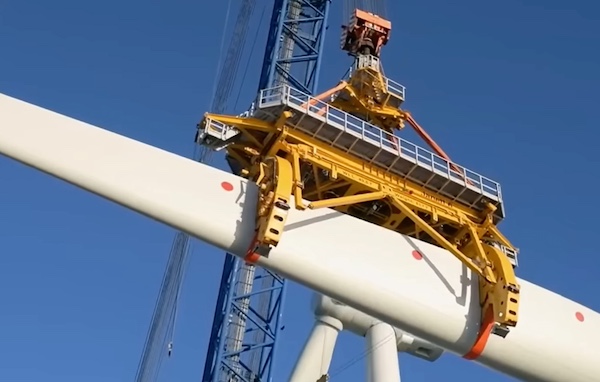
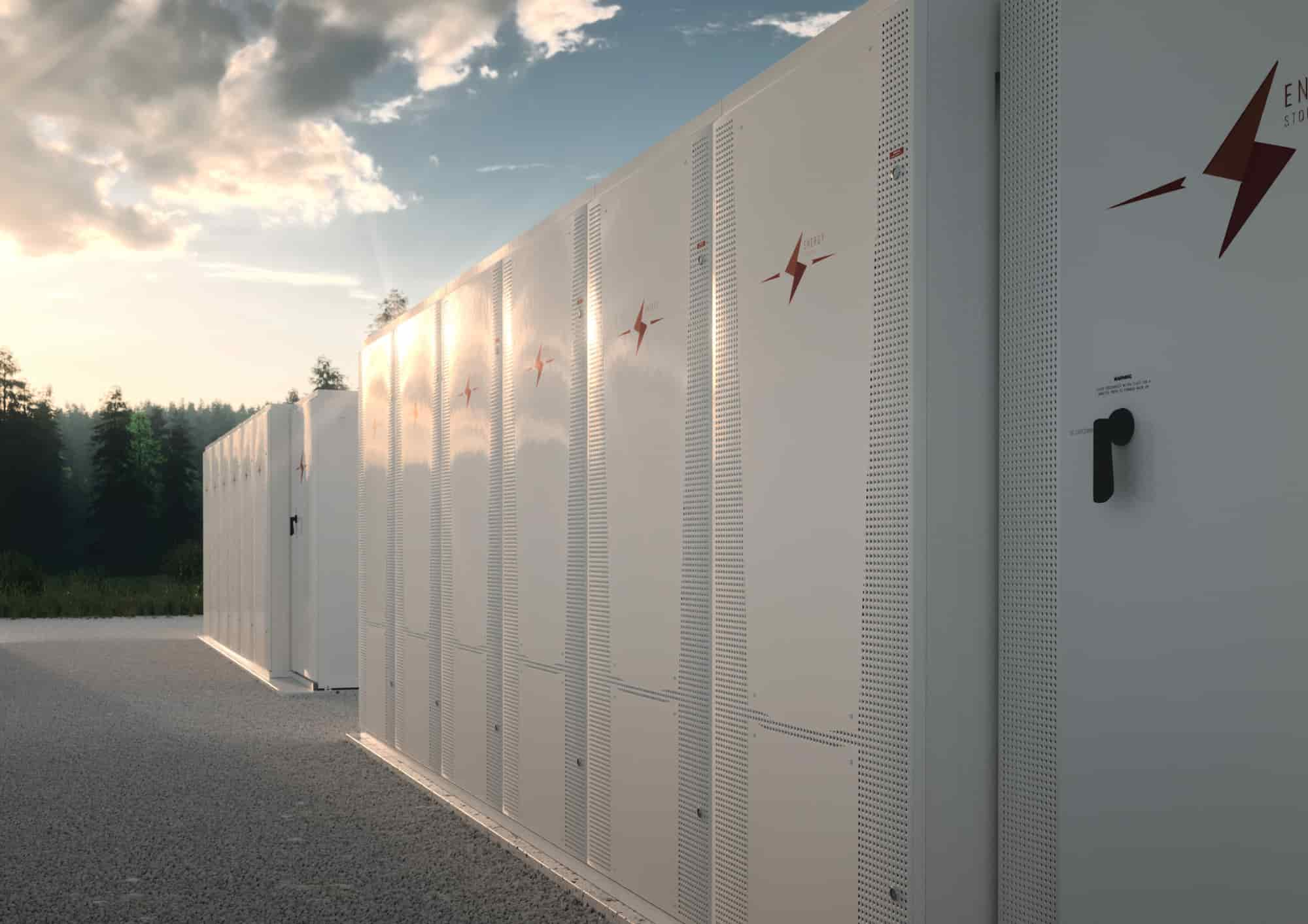
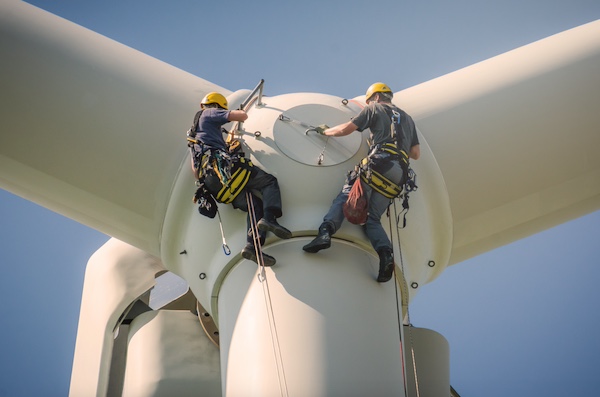
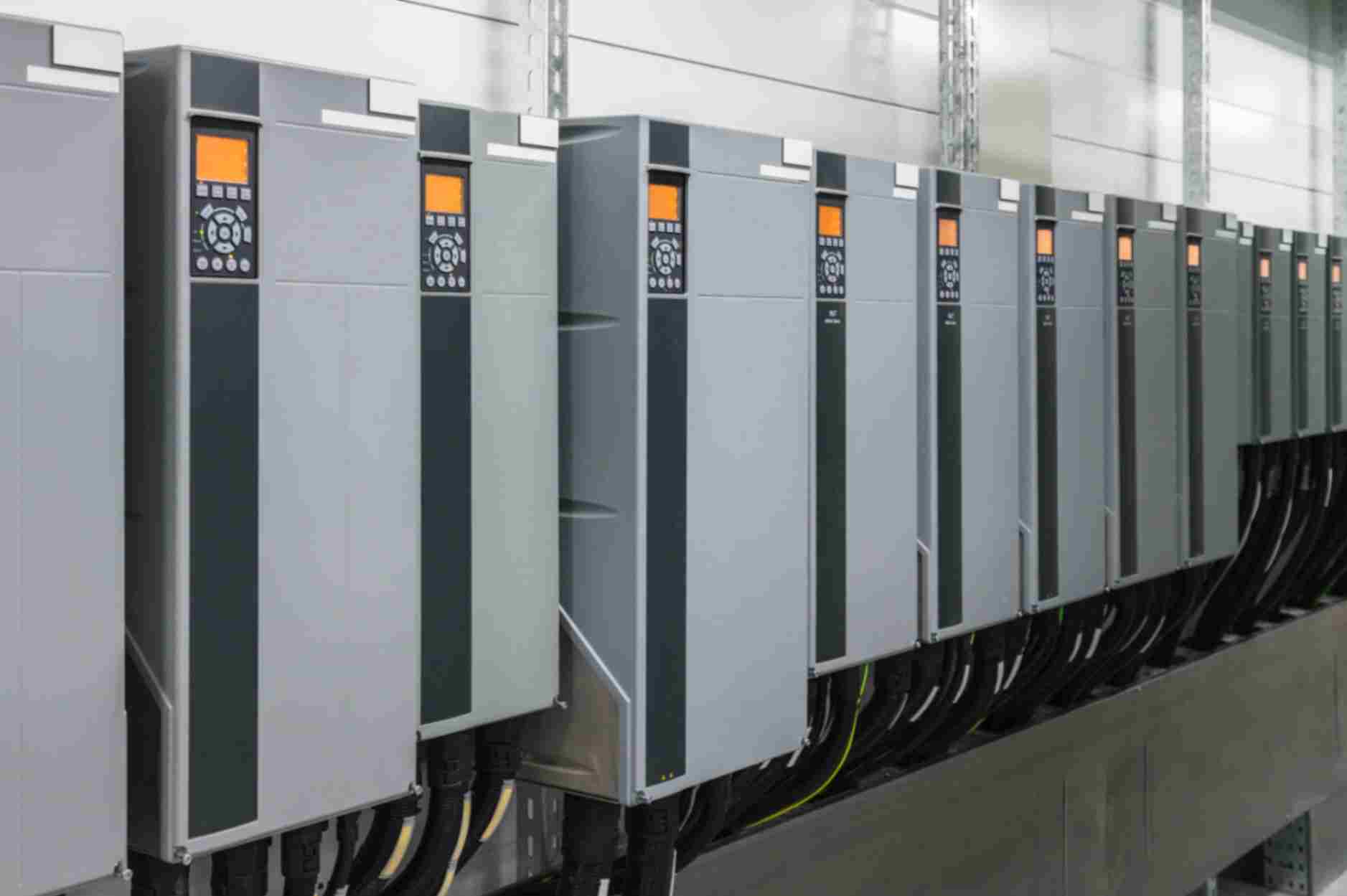
Anza, a leading solar and energy storage procurement platform, unveiled the availability of over 20+ energy storage products on its platform, enabling buyers to access a market-wide view in seconds, saving time in a notably volatile market. Only available through the Anza platform, procurement professionals, developers, and engineers can instantly access the critical data they need to evaluate storage product pricing over a project's lifetime.
"Project developers and procurement professionals are faced with an escalating number of factors they must consider when evaluating an energy storage project, and the lack of real-time pricing among all the different product options and configurations slows decision making and increases risk," says Mike Hall, CEO of Anza. "Earlier this year, we expanded our platform's solar product and counterparty data set to help buyers make optimal decisions for their projects, and today's announcement is a continuation of our commitment to the industry. At Anza, we're focused on understanding the challenges faced by buyers, and we strive to continue building innovative, data-driven solutions to increase efficiency, remove uncertainty and drive higher project returns."
Traditionally, engineers and procurement professionals spend hours manually chasing product and pricing data from multiple suppliers. It can take weeks and months to get the baseline data required from even a handful of vendors. For the first time, IPPs, developers and engineers now have the ability to instantly compare AC and DC Energy Storage Systems (ESS) through the Anza platform, expanding market access and enabling large and small buyers to tap into vendors and comprehensive pricing data previously out of reach, saving considerable time and money.
"The Anza platform enables us to evaluate multiple energy storage products and PCS configurations in seconds," said James Beach, Co-Founder & Managing Partner, EnerSmart Storage. "With Anza's specialized technical and commercial expertise, it's a no-brainer to partner with them in this rapidly evolving market."
This news comes on the heels of Anza's recently expanded platform capabilities to optimize purchasing decisions. Anzawas launched as an independent company in May 2023, founded by a team with decades of experience in renewable energy development, procurement and construction. Since its launch, the company has fostered a culture of innovation, introducing disruptive industry-first data and tools. This mission has led to 100% year-over-year growth, and the Anzaplatform has facilitated the assessment of more than 35 gigawatts of solar and 75 gigawatt-hours of energy storage across over 1,000 projects to date.
Anza | anzarenewables.com

ZF Wind Power is responding to current and future growth in the wind market by a capacity expansion in India and a service partnership in the United States. The world’s capacity to generate renewable electricity is expanding faster than ever, giving it a real chance of achieving the goal of tripling global capacity by 2030, set at the COP28 climate change conference. The IEA report expects a major increase in the global renewable power capacity over the 2023-28 period. Solar PV and wind account for 95 percent of the expansion, with renewables becoming the largest source of global electricity generation by early 2025. Solar PV and onshore wind deployment through 2028 are expected to more than double in the United States, the European Union, India, and Brazil compared with the last five years. While the wind energy supply chain faces massive challenges, ZF commits to taking important steps in empowering a sustainable future together with its partners.
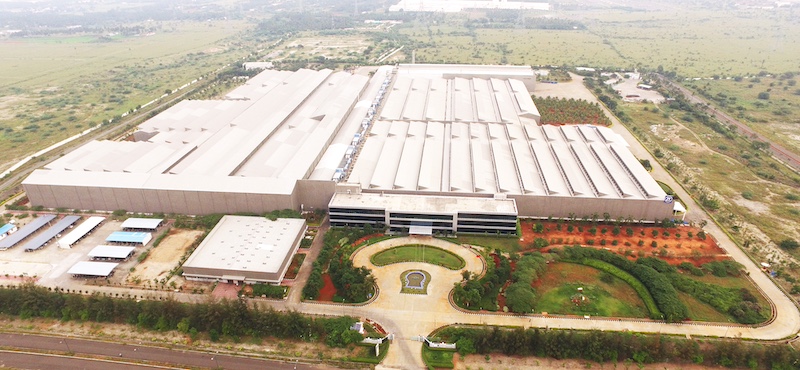
ZF Wind Power Coimbatore increases its capacity from 9 to 12 GW to answer the growth in the international wind market
12 GW capacity increase to capture the growth in the wind market
One of these steps is the expansion of the gearbox manufacturing capacity of ZF Wind Power’s state-of-the-art manufacturing plant in Coimbatore from 9 GW to 12 GW. This expansion captures the growth in the international wind market. ZF invests in both production and testing . The installation of a 13 MW test rig will strengthen ZF’s position as a partner in development and validation. “The test rig will be in use at the beginning of 2025, and we’ll be able to test all system functions up to 13 MW under both static and dynamic loads. This makes it possible for our team to perform both serial and R&D testing,“ explains Deepak Pohekar, Plant Head of ZF Wind Power Coimbatore. The expansion project will be finished around mid-2025 and will support the plant’s current balanced and vertically integrated flow. With a capacity expansion up to a total of 12 GW, the plant can now produce components and gearboxes supporting the transition of over 10 million households to green energy annually. This extension also prepares the Indian location for future complete powertrain assembly.
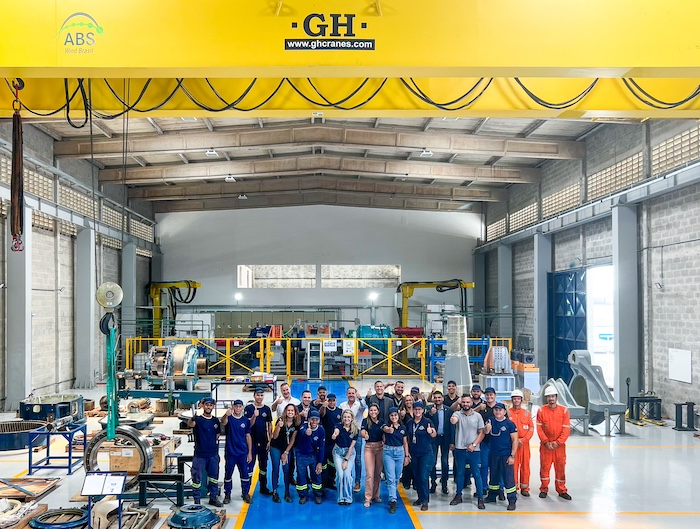
ZF Wind Power and ABS Wind join forces in a strategic partnership
Extra service capacity to meet the demand of regional partners
Thrive, ZF Wind Power’s all-inclusive service concept, strives for worldwide continuous availability. This worldwide service is possible thanks to strong and experienced local service centers and teams. ZF has workshops spread all around the world to guarantee short refurbishment times of up to 90 days. All of them are equipped with modern precision machines, high-class quality equipment, and highly skilled gearbox experts. ZF Wind Power and ABS Wind, a global company specializing in multi-brand maintenance and repair solutions for wind turbines, formed a strategic partnership to maximize the service provision on the North American continent. This cooperation designates ABS Wind as the authorized and exclusive partner for the workshop repair of gearboxes and components for ZF Wind Power in the US. “This partnership represents a new milestone for our company, assisting us in our continued growth and demonstrating confidence in our suite of solutions for the sector, and for industry leaders such as Vestas and ZF Wind Power,” explains Alejandro Pardiñas, CEO of ABS Wind. Thrive’s workshop services for the US market will be located at the ABS facility in Big Spring, Texas – a strategic location to guarantee optimal workshop services corresponding to the Thrive standards. “The combination of our global experience, ABS’ regional resources, and our commitment to sustainability guarantees high-quality Thrive services to enable continuous availability for our partners,” concludes Sivakumar Jayapal, CSO of ZF Wind Power.
Empowering a sustainable future together: local production for global quality
Local service centers and smart logistics convert the complex logistical service system into simple and worry-free transportation of gearboxes for Thrive partners all over the world. The ‘local for global’ principle illustrated in Thrive and in the Indian production hub is integrated into ZF’s worldwide production and service strategy. With strategically located production and service plants in Germany, Belgium, India, China, North and South America, ZF can cover the world with wind power. Thanks to smart industrialization*, ZF optimizes the local tact-driven production capacity and guarantees global quality and on-time delivery. “We strive for local production that’s as close as possible to our partner’s destination. Advanced and sustainable logistics maximize our global manufacturing footprint while minimizing the ecological footprint,” says Felix Henseler, CEO of ZF Wind Power. “This way we empower a sustainable future together with our partners.”
ZF Wind Power | www.zf.com
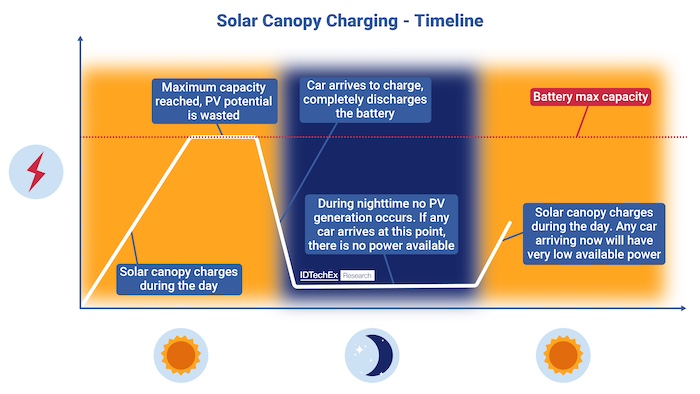
Electrification of cars, buses, and trucks drastically reduces CO2 emissions at the point of use compared to a diesel or petrol alternative. The adoption of EVs across all sectors, with IDTechEx predicting over 180 million electric vehicles to be sold annually by 2044. This will contribute to a drastic reduction in tailpipe emissions. However, the overall emissions are usually highly dependent on the energy mix that goes into grid electricity production. In many economies, this contains significant amounts of fossil fuels such as coal and natural gas. Beyond CO2 emissions, some grids are already at capacity, and the increased load of an electric transport sector risks blackouts and power supply issues. South Africa is an EV market with both of these issues, and several innovations have been made using distributed power generation to tackle these challenges. IDTechEx's research report, "Off-Grid Charging For Electric Vehicles 2024-2034: Technologies, Benchmarking, Players and Forecasts", explores the challenges and solutions associated with charging EVs in the context of constrained electricity grids.
The South African utility grid is subject to frequent load-shedding, periods when demand exceeds supply, and utility operators are forced to impose rolling black or brownouts of up to 50% capacity. This is a problem for all forms of domestic and industrial electrical use but becomes an especially pronounced problem for commercial EV operators. Fleet operators often must charge at predesignated times to maximize uptime and complete all planned routes. If the grid fails during a charging spot, the entire schedule may be adversely affected by factors beyond an operator's control. This is an unusual grid situation; however, it presents a possible worst-case scenario for grid-congested and EV-saturated regions. In 2022, a heatwave in California prompted the state government to ask EV owners not to charge to conserve energy. The growth in electric vehicle sales will only make such problems more widespread.
South Africa also has a very carbon-intensive energy mix, with approximately 70% of power generation being from coal. This directly translates into higher lifecycle CO2 emissions from EVs powered by the electrical grid. Whilst South Africa has a particularly fossil fuel energy mix, the source of electricity plays a critical role in the lifecycle emissions of an electric vehicle.
Disturbed generation gives renewable and grid-independent electricity
One possible solution being trialed in South Africa, amongst other places, is harnessing distributed renewable microgrids to form the backbone of charging networks. By integrating a solar farm, large-scale energy storage (ES), and high-powered charging outlets, Vrendal-based Zero Carbon Charge plans to build an etruck charging network. Not only does this decouple charging from an unreliable grid, it also avoids placing excess electrical demand on utilities, avoids the need for costly grid expansions, and provides free and 100% renewable energy for the trucks to operate on. This is not limited to South Africa; the USA, in particular, has also seen a boom in companies offering grid-free solar-powered charging. In the US, many of the products are smaller scale and transportable, allowing easy setup for EV users who want quick access to EV charging.
Easy setup, no grid connection, but slow charging rates
The main challenge with distributed solar generation for EV charging is the low power output of photovoltaic panels. Most produce around 250 Watts per square meter, which is relatively low. In fact, to charge at 22kW (generally considered Level 2 fast charging), a solar canopy would need to be at least 10 x 10 meters, a considerable footprint, especially in an urban environment. The other challenge is storing energy, as charging will not always be required constantly, so an on-site battery is required to store the generated electricity. Without an integrated on-site battery, charging is impossible when there is no sunlight, such as inclement weather or overnight. On-site battery storage can combat this intermittency.
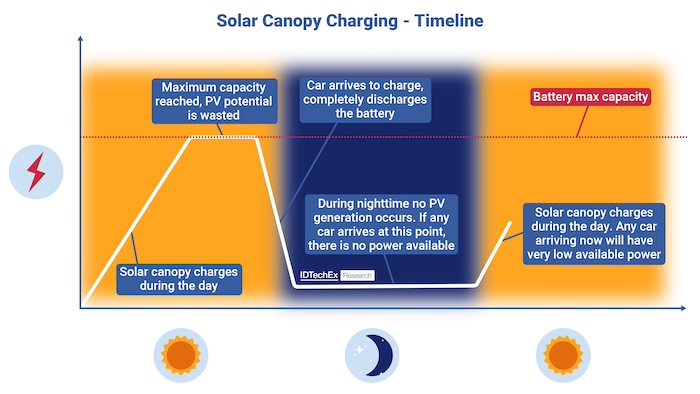
A possible timeline for the SoC (state of charge) of the integrated on-site battery storage of a solar canopy charger (solar canopies include a solar panel, battery, and EV charging outlet). Possible situations where charging is impossible are displayed. Source: IDTechEx
Larger solar farms with integrated energy storage can become islanded microgrids, and with enough on-site storage and photovoltaic production, potential grid-independent fast charging is possible. This is the approach proposed for the South African etruck charging network. It is important to note that purely solar solutions are likely to be geographically restricted to areas with high photovoltaic potential. Thus, it is no surprise that the leading regions are Western regions of the US and places like South Africa. Beam Global, a supplier of EV canopy chargers, recently announced its first sales in the European market to the United Kingdom Ministry of Defense. However, the chargers will not be deployed in the mainland of the UK; they will be deployed on a military base in Cyprus, one of the sunniest regions on the continent.
Despite technical challenges, the aging and fossil fuel-heavy nature of grids combined with high EV uptake call for new charging solutions, and IDTechEx predicts that solar charging systems will make up a sizeable portion of the overall US$16 billion off-grid charging infrastructure hardware market by 2034. IDTechEx research also indicates several other technologies likely to be adopted for off-grid EV charging. Hydrogen fuel cell charging is likely to emerge as a key solution for use cases requiring much greater power per area, with a particular expected focus on electrified construction sites. More niche technologies include AWE (airborne wind energy), which harnesses high altitude winds for distributed power generation. For an in-depth look at solar EV charging, as well as alternative technology options such as AWE and hydrogen see IDTechEx's latest research on the topic, "Off-Grid Charging For Electric Vehicles 2024-2034: Technologies, Benchmarking, Players and Forecasts".
IDTechEx | www.idtechex.com

Despite high-profile incidents, millions in costs per incident, significant downtime, and risk of reputational damage, the vast majority of wind and solar energy assets, both new and old, are not adequately protected from fire.
Approximately 75-85% of operational wind turbines and 70-80% of new wind turbines globally, do not have fire suppression technology installed. This is despite the fact that the average turbine has a 1 in 100 chance of catching fire over an expected 20-year life, based on data from Wind Power Engineering. Replacing one turbine can cost up to $9 million, factoring in revenue lost from downtime. When it comes to solar, an estimated 95% of all solar inverters do not have fire suppression technology installed, according to Firetrace International, a leading provider of fire suppression solutions supporting safe operations in renewable energy.
Figures also show that fire risk dramatically increases in older assets, up to a 30% increase in wind assets aged between 5-10 years and up to a 15% increase in solar inverters after 3-5 years. With approximately a fifth of Europe's onshore turbines at least 15 years in age, and 14% of US wind capacity currently generated by turbines more than 10 years old, retrofitting aging assets with fire suppression systems is crucial. The fire risk is exacerbated by the fact that many of these assets are in remote areas, which delays potential emergency responses and increases the need for turbine specific safety systems.
There has been improvement in the outlook for wind turbine protection. In the US especially, huge levels of public investment is coming into the sector as a result of the Inflation Reduction Act to support US offshore capacity targets, and developers can take steps to manage the fire risk proactively. Many owner operators across the globe are leading the way in terms of safe operations and installing this technology and Firetrace has seen a 26% increase in installations over the last 5 years.
Biden also announced a $6 billion investment in November 2023 aimed at improving community resilience to climate change and strengthening the aging grid. Equipping renewable assets with fire suppression systems must be part of this grid hardening effort, especially as utilities face pressure from net-zero targets, portfolio scale, and potential fines from fire-related incidents.
However, despite these actions, only 20-30% of new wind turbines are installed with adequate fire protection and there is no change for solar inverters, with 95% of new assets still at risk.
Most renewable energy assets have fire detection systems installed but these merely identify the presence of a fire without actively addressing it. In contrast, fire suppression systems are essential for quickly and effectively extinguishing the flames, minimizing the risk of extensive damage and potential spread. By swiftly quelling fires, suppression systems help to protect not only the asset itself but also nearby ecosystems, communities, and infrastructure.
Owning approximately 72% of wind and solar assets globally and being committed to 2030 Net Zero goals, it is especially important for utilities to take the lead by installing fire suppression systems in both new and older assets.
Joseph DeBellis, Senior Global Sales Manager at Firetrace, said: “The increasing fire risks in aging renewable assets highlight the urgent need for utilities and other owner operators to take proactive measures. Retrofitting fire suppression systems is not only a cost-effective solution but also essential for protecting assets, minimizing downtime, securing clean energy supply, and ensuring the safety of surrounding communities.
“We have been supporting safe operations in renewable energy for nearly 15 years and have already installed fire suppression on over 15,000 assets. Firetrace stands ready to collaborate with utilities worldwide to implement comprehensive fire suppression solutions and mitigate the escalating fire risks in aging renewable assets.”
Engagement with local communities, vegetation management around assets, and adequate spacing between assets are additional critical measures that must be integrated into fire safety strategies. Firetrace works with developers and owner operators at design stage to provide customised solutions and has hundreds of partners across the globe including AHJs, local authorities and health and safety consultants who can support customers on local regulation and compliance.
Firetrace | https://www.firetrace.com/
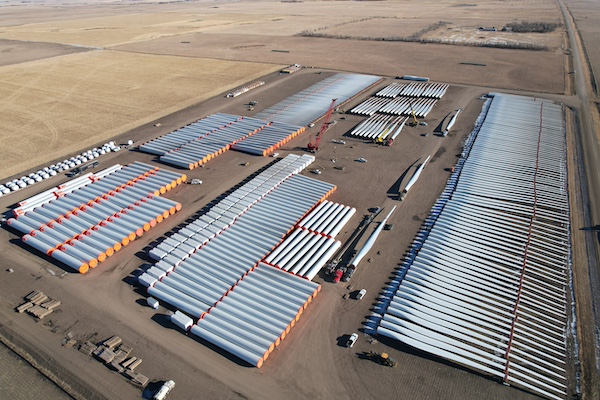
Scout Clean Energy, a Colorado-based renewable energy developer, owner, and operator, is pleased to announce the closing of a $100 million equipment supply loan (ESL) with Rabobank. The facility will be used to fund Scout equipment down payments. Scout is a portfolio company managed by Brookfield Asset Management, a global leader of renewable power and decarbonization solutions.
Scout intends to upsize the facility to $200 millionand bring in additional banks later in the year to continue to secure equipment supply for Scout's near-term advanced stage pipeline of wind, solar and storage projects.
"This financing marks the continued maturation of Scout Clean Energy as a leading fully integrated renewables IPP," said John Clapp, chief financial officer at Scout Clean Energy.
Expanding the credit facilities is an important part of Scout's overall strategy to reduce the cost of capital, allowing Scout to be as competitive as possible in the market and provide them with the financial flexibility to meet the development needs as they grow with the pipeline.
"Rabobank is pleased to finance Scout's renewable energy equipment supply," said Claus Hertel, managing director of project finance at Rabobank Wholesale Banking North America. "This facility will accelerate its robust growth momentum and secure valuable equipment for its pipeline in wind, solar and storage. It is a testament to the strong relationship we have built with Scout since its inception and our steadfast commitment to banking the energy transition."
"Scout is excited to strengthen our existing relationship with Rabobank who has consistently supported Scout's growth over many years," explained Clapp. "With this new credit facility, we plan to aggressively push Scout's growth pipeline in wind, solar and battery storage encompassing over 19,000 megawatts of planned renewable energy build across 22 states."
Scout Clean Energy | www.scoutcleanenergy.com
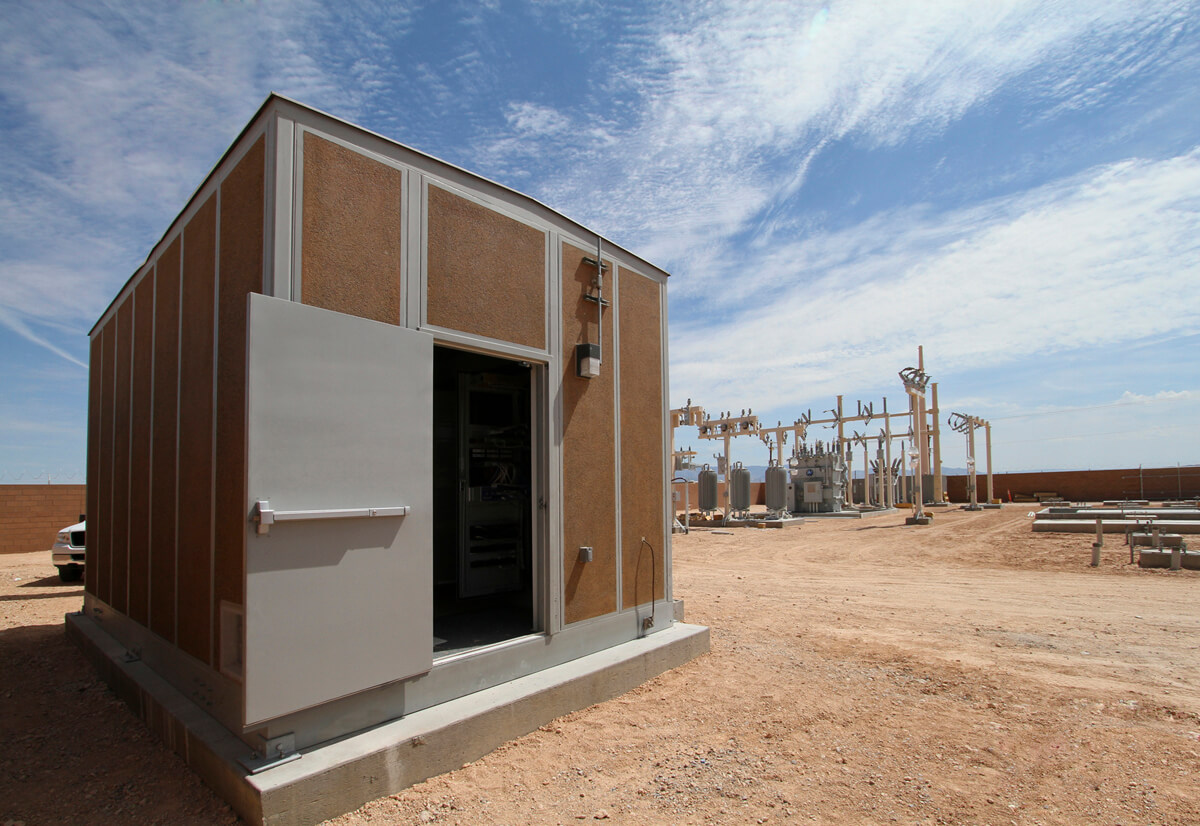
International Battery Metals Ltd. (CSE: IBAT), announced an agreement with US Magnesium LLC (US Mag) for the installation of its first-of-its-kind, patented modular direct lithium extraction (DLE) plant installed at a brine resource. The mobile facility is co-located at US Mag's existing operations outside Salt Lake City, Utah. IBAT's plant will process brine produced from lithium-containing waste-magnesium salts. The resulting lithium chloride product will provide feed for high-purity lithium carbonate production by US Mag.
Modular, transportable design. In the last month, IBAT has initiated most of the equipment setup, including pipe and utility tie-ins and other installation activities of its patented modular extraction plant at the US Mag site. Initial testing of critical equipment is underway. IBAT anticipates that full commissioning and startup will be completed within the next three months, with commercial lithium production to follow shortly thereafter.
"Our commercial operations with US Mag will advance a productive lithium extraction operation," said Garry Flowers, IBAT CEO. "Given current lithium demand, supply dependence on China, and permitting challenges, our expected commercial operations are coming at an ideal time to produce lithium at scale in the U.S."
IBAT's patented modular plant was fabricated in Lake Charles, La., before being recently transported to US Mag.
Independently verified. IBAT's technology has been validated by an independent review by SLR International Corporation, a global leader in environmental and engineering services, and Greg Mehos & Associates LLC, an independent testing agency. The technology has been proven effective with diverse brine resources, including lithium-containing oilfield produced brines, where it holds great promise based on a large-volume test with Galvanic Energy in the Smackover Formation in Arkansas. The technology also has been proven effective with subterranean brine resources in Alberta, Saskatchewan, Michigan, Ohio, Oklahoma, California, Texas, Salars in Chile and Argentina, and geothermal brine in Germany.
Commercial operations will serve growing lithium demand from automakers for electric-vehicle batteries, as well as energy storage batteries to support growing electricity demand and to balance the grid from increased renewable energy integration.
Designed for sustainability. IBAT's first-of-its-kind patented modular, mobile lithium extraction plant also has been independently verified to extract more than 97% of available lithium from brine. Further, laboratory and field tests have demonstrated that the plant's effective proprietary selective absorbent maximizes lithium uptake and minimizes brine-based impurities. Due to the plant's advanced water recovery rate, IBAT's technology is highly protective of sensitive water resources. IBAT has demonstrated that the technology can extract lithium from subterranean brine sources and return the lithium-depleted brine to the same subsurface aquifer in a closed recycling loop. This work has been verified from natural brines in Canada, the U.S., Argentina, Chile, Mexico and Europe. Other than the use of acid and base for pH control, IBAT's compact lithium extraction process does not introduce chemicals into the brine. This unique patented technology promises faster delivery of lithium chloride while ensuring minimal environmental impact.
Small footprint, high yield. Another benefit is that the modular, easily transportable technology can operate within a three-acre site – a significantly smaller footprint than other types of lithium production facilities. The modular, compact design optimizes plant construction and operating costs. Engineering reviews have determined that the IBAT DLE plant design capacity is capable of initially producing up to 5,000 metric tons/year, depending on the characteristics of brine resources, such as lithium concentration and brine salt composition. The modular plant also can be expanded to accommodate larger capacity as demand requires.
The modular DLE operations position IBAT to emerge as a key supplier for growing U.S. lithium demand, providing an alternative to China and other global suppliers. This proven technology will produce at commercial scale with a smaller footprint – both in size of the facility and in terms of environmental impact.
"International Battery Metals' patented Modular Extraction Technology will be the basis of future lithium extraction from brine resources around the world. It is the fastest technology to deploy and commence commercial operations," said Dr. John Burba, founder, CTO and director of International Battery Metals. "Furthermore, its inherent efficiency and environmental protective characteristics make IBAT's technology superior to existing DLE operations. We are very excited about the placement of our first plant on a resource and the expected commencement of commercial operations."
The agreement provides IBAT with royalties from US Mag based on lithium sales, as well as payments for equipment operations based on lithium prices and performance.
International Battery Metals | https://www.ibatterymetals.com/

Power Electronics, a leading manufacturer of solar inverters for photovoltaic plants and a global leader in energy storage, is all set to participate in Cleanpower 2024, taking place this year from May 6th to 9th at the Minneapolis Convention Center.
Visitors to Power Electronics' booth will get firsthand knowledge about the significant $300 million local manufacturing project aimed at increasing their production capacity in the US and generating approximately 600 job opportunities.
Booth #2615 will serve as an optimal venue not only for understanding the multinational company's growth plans but also for visitors to intimately experience the outstanding performance and success of Power Electronics GEN3 products. A special tribute will be dedicated to their 4.2MVA HEM and PCSM GEN3, celebrated for integrating the benefits of a central inverter with the modularity of string inverters.
During Cleanpower, a team of experts in Service, Sales Engineering, and Product & Applications will unveil Power Electronics' vision for shaping the future of the US solar industry, presenting cutting-edge solar, storage, and mobility solutions that solidify the company's position as a market leader.
.jpg)
Power Electronics manufacturing project: Innovation for industry's future
The expansive new Power Electronics facility, sprawling over 45 acres, showcases cutting-edge manufacturing and assembly technologies, poised to revolutionize nationwide product production and distribution.
Furthermore, as a firm commitment to technical knowledge, the group's new facility features a dedicated Training Center exclusively for its customers. This center is already operational and fully booked until 2025, showcasing Power Electronics' dedication to empowering clients with essential skills and expertise.
"With our local manufacturing project, we will create innovative solutions tailored to industry needs and contribute to local economic growth and development. This strategic investment not only strengthens Power Electronics' market position but also advances the country's transition to a more sustainable energy landscape” added David Salvo, CEO of Power Electronics.
Power Electronics will reinforce its support for the growing renewable energy industry in the United States, which aims to achieve an ambitious target of sourcing 80% of its energy from renewable sources by 2030.
Power Electronics | https://power-electronics.com/en
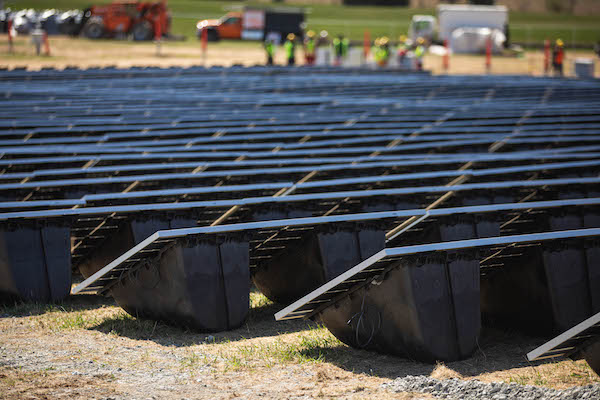
Alternative Energies May 15, 2023
The United States is slow to anger, but relentlessly seeks victory once it enters a struggle, throwing all its resources into the conflict. “When we go to war, we should have a purpose that our people understand and support,” as former Secretary ....
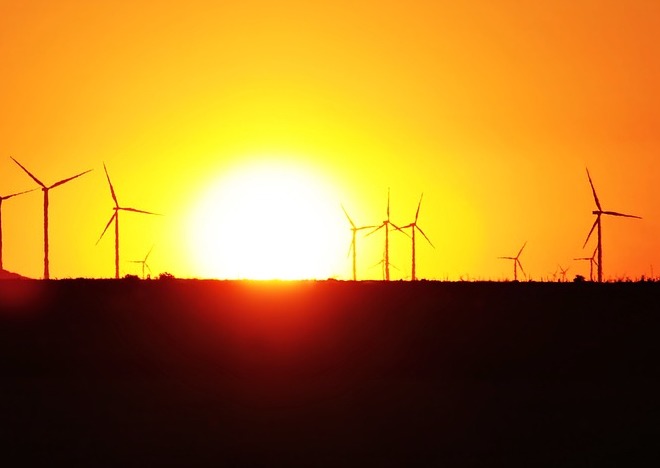
Unleashing trillions of dollars for a resilient energy future is within our grasp — if we can successfully navigate investment risk and project uncertainties.
The money is there — so where are the projects?
A cleaner and more secure energy future will depend on tapping trillions of dollars of capital. The need to mobilize money and markets to enable the energy transition was one of the key findings of one of the largest studies ever conducted among the global energy sector C-suite. This will mean finding ways to reduce the barriers and uncertainties that prevent money from flowing into the projects and technologies that will transform the energy system. It will also mean fostering greater collaboration and alignment among key players in the energy space.
 Interestingly, the study found that insufficient access to finance was not considered the primary cause of the current global energy crisis. In fact, capital was seen to be available — but not being unlocked. Why is that? The answer lies in the differing risk profiles of energy transition investments around the world. These risks manifest in multiple ways, including uncertainties relating to project planning, public education, stakeholder engagement, permitting, approvals, policy at national and local levels, funding and incentives, technology availability, and supply chains.
Interestingly, the study found that insufficient access to finance was not considered the primary cause of the current global energy crisis. In fact, capital was seen to be available — but not being unlocked. Why is that? The answer lies in the differing risk profiles of energy transition investments around the world. These risks manifest in multiple ways, including uncertainties relating to project planning, public education, stakeholder engagement, permitting, approvals, policy at national and local levels, funding and incentives, technology availability, and supply chains.
These risks need to be addressed to create more appealing investment opportunities for both public and private sector funders. This will require smart policy and regulatory frameworks that drive returns from long-term investment into energy infrastructure. It will also require investors to recognize that resilient energy infrastructure is more than an ESG play — it is a smart investment in the context of doing business in the 21st century.
Make de-risking investment profiles a number one priority
According to the study, 80 percent of respondents believe the lack of capital being deployed to accelerate the transition is the primary barrier to building the infrastructure required to improve energy security. At the same time, investors are looking for opportunities to invest in infrastructure that meets ESG and sustainability criteria. This suggests an imbalance between the supply and demand of capital for energy transition projects.
How can we close the gap?
One way is to link investors directly to energy companies. Not only would this enable true collaboration and non-traditional partnerships, but it would change the way project financing is conceived and structured — ultimately aiding in potentially satisfying the risk appetite of latent but hugely influential investors, such as pension funds. The current mismatch of investor appetite and investable projects reveals a need for improving risk profiles, as well as a mindset shift towards how we bring investment and developer stakeholders together for mutual benefit. The circular dilemma remains: one sector is looking for capital to undertake projects within their skill to deploy, while another sector wonders where the investable projects are.
This conflict is being played out around the world; promising project announcements are made, only to be followed by slow progress (or no action at all). This inertia results when risks are compounded and poorly understood. To encourage collaboration between project developers and investors with an ESG focus, more attractive investment opportunities can be created by pulling several levers: public and private investment strategies, green bonds and other sustainable finance instruments, and innovative financing models such as impact investing.
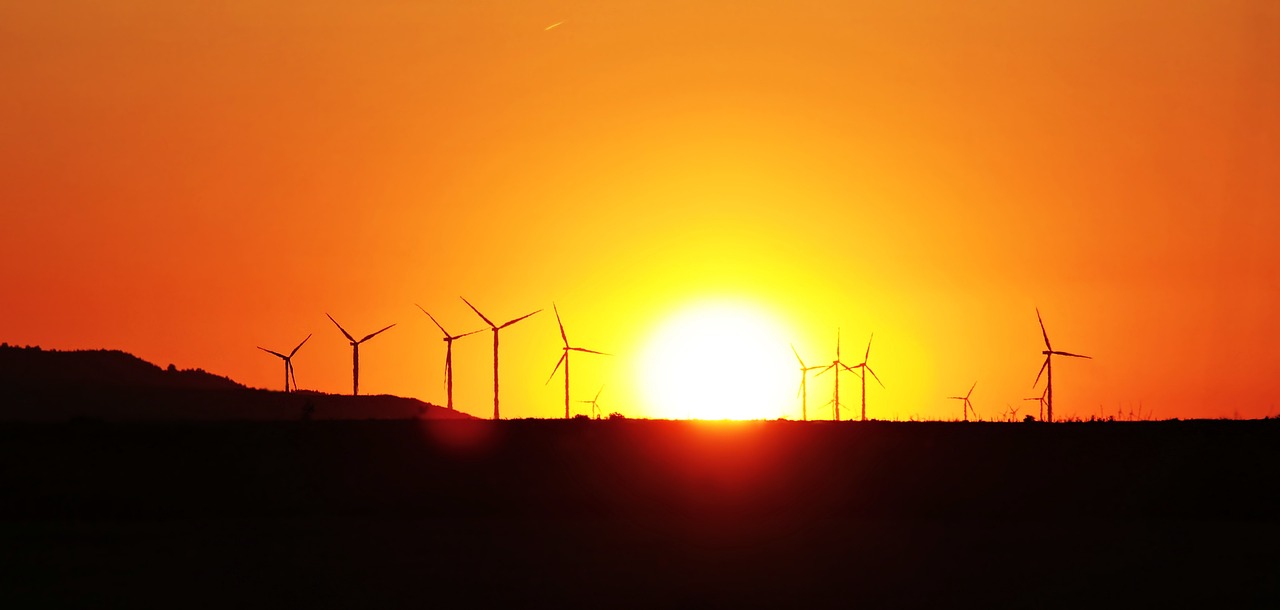
Expedite permitting to speed the adoption of new technologies
Another effective strategy to de-risk investment profiles is found in leveraging new technologies and approaches that reduce costs, increase efficiency, and enhance the reliability of energy supply. Research shows that 62 percent of respondents indicated a moderate or significant increase in investment in new and transitional technologies respectively, highlighting the growing interest in innovative solutions to drive the energy transition forward.
Hydrogen, carbon capture and storage, large-scale energy storage, and smart grids are some of the emerging technologies identified by survey respondents as having the greatest potential to transform the energy system and create new investment opportunities. However, these technologies face challenges such as long lag times between conception and implementation.
If the regulatory environment makes sense, then policy uncertainty is reduced, and the all-important permitting pathways are well understood and can be navigated. Currently, the lack of clear, timely, and fit-for-purpose permitting is a major roadblock to the energy transition. To truly unleash the potential of transitional technologies requires the acceleration of regulatory systems that better respond to the nuance and complexity of such technologies (rather than the current one-size-fits all approach). In addition, permitting processes must also be expedited to dramatically decrease the period between innovation, commercialization, and implementation. One of the key elements of faster permitting is effective consultation with stakeholders and engagement with communities where these projects will be housed for decades. This is a highly complex area that requires both technical and communication skills.
The power of collaboration, consistency, and systems thinking
The report also reveals the need for greater collaboration among companies in the energy space to build a more resilient system. The report shows that, in achieving net zero, there is a near-equal split between those increasing investment (47 percent of respondents), and those decreasing investment (39 percent of respondents). This illustrates the complexity and diversity of the system around the world. A more resilient system will require all its components – goals and actions – to be aligned towards a common outcome.
Another way to de-risk the energy transition is to establish consistent, transparent, and supportive policy frameworks that encourage investment and drive technological innovation. The energy transition depends on policy to guide its direction and speed by affecting how investors feel and how the markets behave. However, inconsistent or inadequate policy can also be a source of uncertainty and instability. For example, shifting political priorities, conflicting international standards, and the lack of market-based mechanisms can hinder the deployment of sustainable technologies, resulting in a reluctance to commit resources to long-term projects.
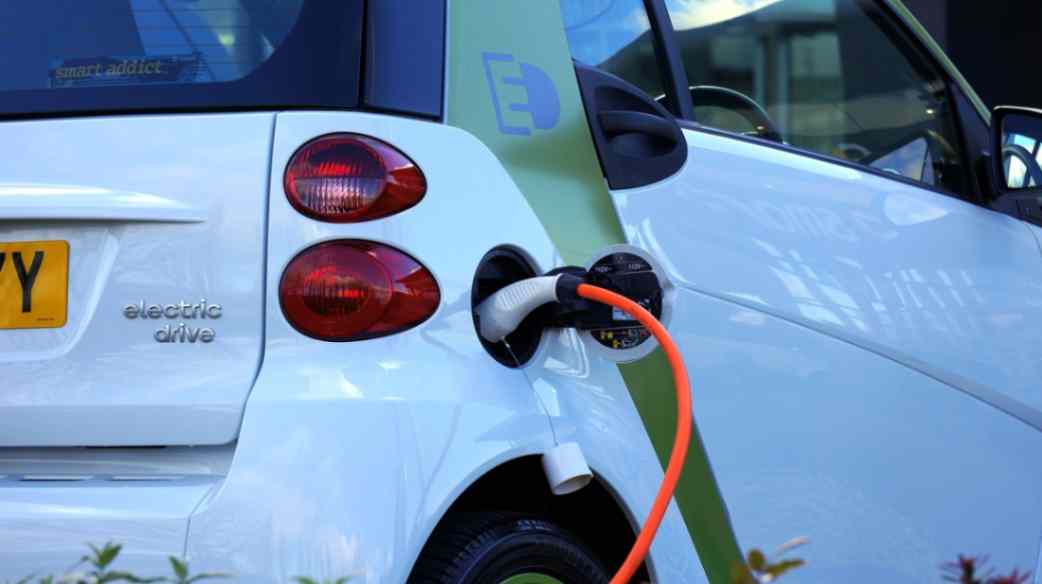
Variations in country-to-country deployment creates disparities in energy transition progress. For instance, the 2022 Inflation Reduction Act in the US has posed challenges for the rest of the world, by potentially channeling energy transition investment away from other markets and into the US. This highlights the need for a globally unified approach to energy policy that balances various national interests while addressing a global problem.
To facilitate the energy transition, it is imperative to establish stable, cohesive, and forward-looking policies that align with global goals and standards. By harmonizing international standards, and providing clear and consistent signals, governments and policymakers can generate investor confidence, helping to foster a robust energy ecosystem that propels the sector forward.
Furthermore, substantive and far-reaching discussions at international events like the United Nations Conference of the Parties (COP), are essential to facilitate this global alignment. These events provide an opportunity to de-risk the energy transition through consistent policy that enables countries to work together, ensuring that the global community can tackle the challenges and opportunities of the energy transition as a united front.
Keeping net-zero ambitions on track
Despite the challenges faced by the energy sector, the latest research reveals a key positive: 91 percent of energy leaders surveyed are working towards achieving net zero. This demonstrates a strong commitment to the transition and clear recognition of its importance. It also emphasizes the need to accelerate our efforts, streamline processes, and reduce barriers to realizing net-zero ambitions — and further underscores the need to de-risk energy transition investment by removing uncertainties.
The solution is collaborating and harmonizing our goals with the main players in the energy sector across the private and public sectors, while establishing consistent, transparent, and supportive policy frameworks that encourage investment and drive technological innovation.
These tasks, while daunting, are achievable. They require vision, leadership, and action from all stakeholders involved. By adopting a new mindset about how we participate in the energy system and what our obligations are, we can stimulate the rapid progress needed on the road to net zero.
Dr. Tej Gidda (Ph.D., M.Sc., BSc Eng) is an educator and engineer with over 20 years of experience in the energy and environmental fields. As GHD Global Leader – Future Energy, Tej is passionate about moving society along the path towards a future of secure, reliable, and affordable low-carbon energy. His focus is on helping public and private sector clients set and deliver on decarbonization goals in order to achieve long-lasting positive change for customers, communities, and the climate. Tej enjoys fostering the next generation of clean energy champions as an Adjunct Professor at the University of Waterloo Department of Civil and Environmental Engineering.
GHD | www.ghd.com
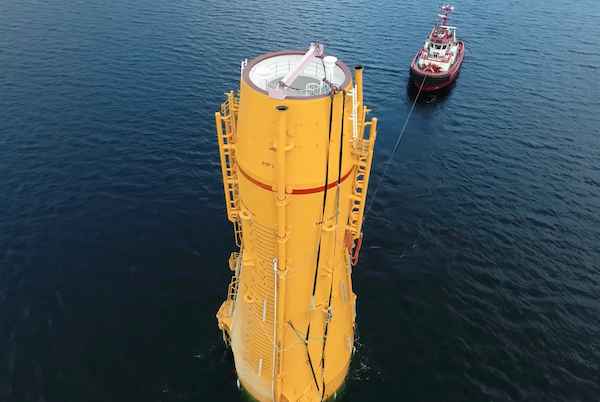
The Kincardine floating wind farm, located off the east coast of Scotland, was a landmark development: the first commercial-scale project of its kind in the UK sector. Therefore, it has been closely watched by the industry throughout its installation. With two of the turbines now having gone through heavy maintenance, it has also provided valuable lessons into the O&M processes of floating wind projects.
In late May, the second floating wind turbine from the five-turbine development arrived in the port of Massvlakte, Rotterdam, for maintenance. An Anchor Handling Tug Supply (AHTS)
vessel was used to deliver the KIN-02 turbine two weeks after a Platform Supply Vessel (PSV) and AHTS had worked to disconnect the turbine from the wind farm site. The towing vessel became the third vessel used in the operation.
This is not the first turbine disconnected from the site and towed for maintenance. In the summer of 2022, KIN-03 became the world’s first-ever floating wind turbine that required heavy maintenance (i.e. being disconnected and towed for repair). It was also towed from Scotland to Massvlakte.
Each of these operations has provided valuable lessons for the ever-watchful industry in how to navigate the complexities of heavy maintenance in floating wind as the market segment grows.

The heavy maintenance process
When one of Kincardine’s five floating 9.5 MW turbines (KIN-03) suffered a technical failure in May 2022, a major technical component needed to be replaced. The heavy maintenance strategy selected by the developer and the offshore contractors consisted in disconnecting and towing the turbine and its floater to Rotterdam for maintenance, followed by a return tow and re-connection. All of the infrastructure, such as crane and tower access, remained at the quay following the construction phase. (Note, the following analysis only covers KIN-03, as details of the second turbine operation are not yet available).
Comparing the net vessel days for both the maintenance and the installation campaigns at this project highlights how using a dedicated marine spread can positively impact operations.
For this first-ever operation, a total of 17.2 net vessel days were required during turbine reconnection—only a slight increase on the 14.6 net vessel days that were required for the first hook-up operation performed during the initial installation in 2021. However, it exceeds the average of eight net vessel days during installation. The marine spread used in the heavy maintenance operation differed from that used during installation. Due to this, it did not benefit from the learning curve and experience gained throughout the initial installation, which ultimately led to the lower average vessel days.
The array cable re-connection operation encountered a similar effect. The process was performed by one AHTS that spent 10 net vessel days on the operation. This compares to the installation campaign, where the array cable second-end pull-in lasted a maximum of 23.7 hours using a cable layer.
Overall, the turbine shutdown duration can be broken up as 14 days at the quay for maintenance, 52 days from turbine disconnection to turbine reconnection, and 94 days from disconnection to the end of post-reconnection activities.
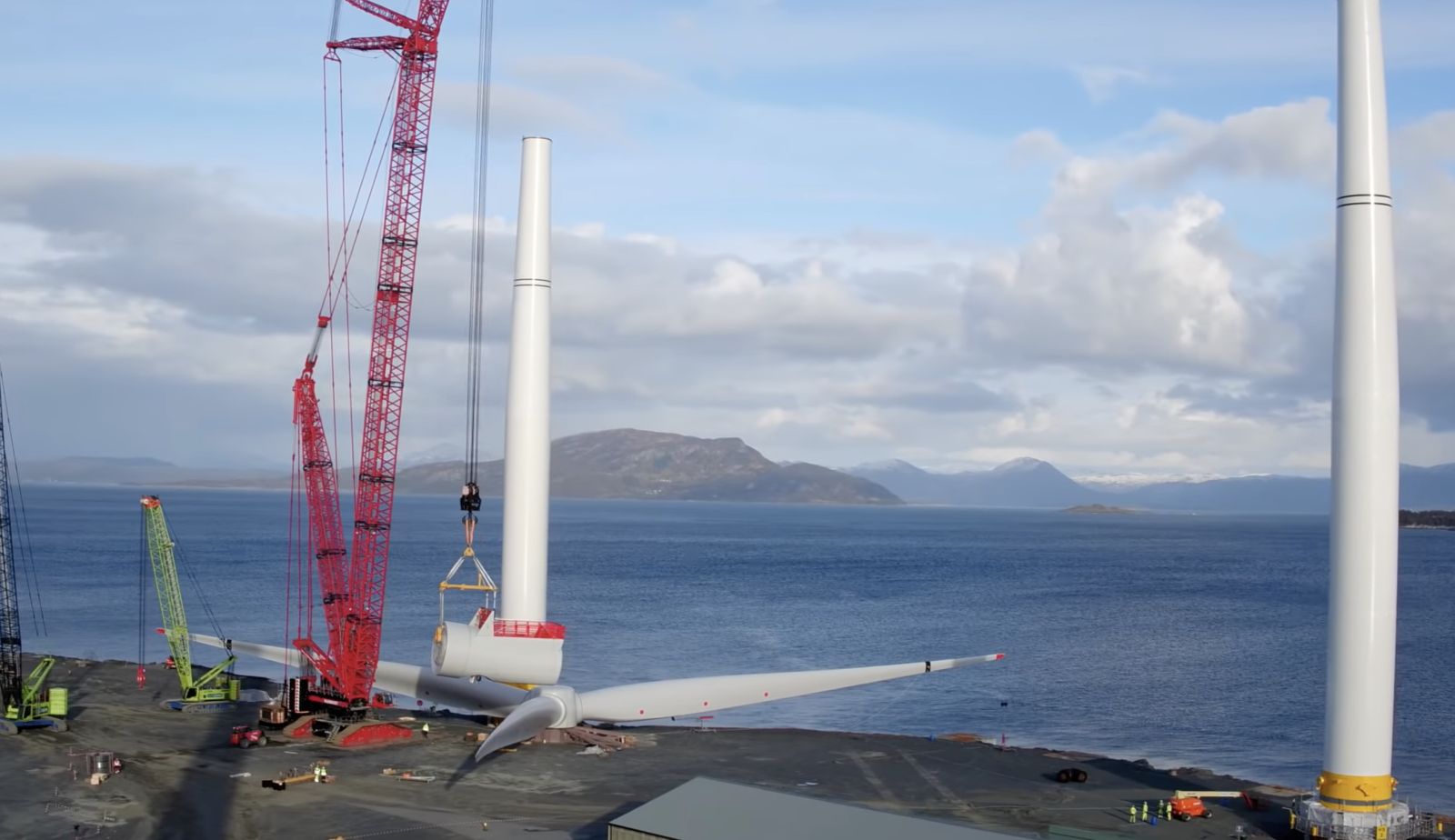
What developers should keep in mind for heavy maintenance operations
This analysis has uncovered two main lessons developers should consider when planning a floating wind project: the need to identify an appropriate O&M port, and to guarantee that a secure fleet is available.
Floating wind O&M operations require a port with both sufficient room and a deep-water quay. The port must also be equipped with a heavy crane with sufficient tip height to accommodate large floaters and reach turbine elevation. Distance to the wind farm should also be taken into account, as shorter distances will reduce towing time and, therefore, minimize transit and non-productive turbine time.
During the heavy maintenance period for KIN-03 and KIN-02, the selected quay (which had also been utilized in the initial installation phase of the wind farm project), was already busy as a marshalling area for other North Sea projects. This complicated the schedule significantly, as the availability of the quay and its facilities had to be navigated alongside these other projects. This highlights the importance of abundant quay availability both for installation (long-term planning) and maintenance that may be needed on short notice.
At the time of the first turbine’s maintenance program (June 2022), the North Sea AHTS market was in an exceptional situation: the largest bollard pull AHTS units contracted at over $200,000 a day, the highest rate in over a decade.
During this time, the spot market was close to selling out due to medium-term commitments, alongside the demand for high bollard pull vessels for the installation phase at a Norwegian floating wind farm project. The Norwegian project required the use of four AHTS above a 200t bollard pull. With spot rates ranging from $63,000 to $210,000 for the vessels contracted for Kincardine’s maintenance, the total cost of the marine spread used in the first repair campaign was more than $4 million.
Developers should therefore consider the need to structure maintenance contracts with AHTS companies, either through frame agreements or long-term charters, to decrease their exposure to spot market day rates as the market tightens in the future.

While these lessons are relevant for floating wind developers now, new players are looking towards alternative heavy O&M maintenance options for the future. Two crane concepts are especially relevant in this instance. The first method is for a crane to be included in the turbine nacelle to be able to directly lift the component which requires repair from the floater, as is currently seen on onshore turbines. This method is already employed in onshore turbines and could be applicable for offshore. The second method is self-elevating cranes with several such solutions already in development.
The heavy maintenance operations conducted on floating turbines at the Kincardine wind farm have provided invaluable insights for industry players, especially developers. The complex process of disconnecting and towing turbines for repairs highlights the need for meticulous planning and exploration of alternative maintenance strategies, some of which are already in the pipeline. As the industry evolves, careful consideration of ports, and securing fleet contracts, will be crucial in driving efficient and cost-effective O&M practices for the floating wind market.
Sarah McLean is Market Research Analyst at Spinergie, a maritime technology company specializing in emission, vessel performance, and operation optimization.
Spinergie | www.spinergie.com
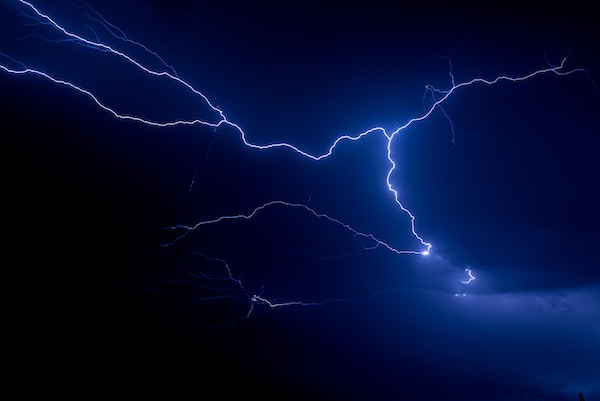
According to the Energy Information Administration (EIA), developers plan to add 54.5 gigawatts (GW) of new utility-scale electric generating capacity to the U.S. power grid in 2023. More than half of this capacity will be solar. Wind power and battery storage are expected to account for roughly 11 percent and 17 percent, respectively.
A large percentage of new installations are being developed in areas that are prone to extreme weather events and natural disasters (e.g., Texas and California), including high wind, tornadoes, hail, flooding, earthquakes, wildfires, etc. With the frequency and severity of many of these events increasing, project developers, asset owners, and tax equity partners are under growing pressure to better understand and mitigate risk.
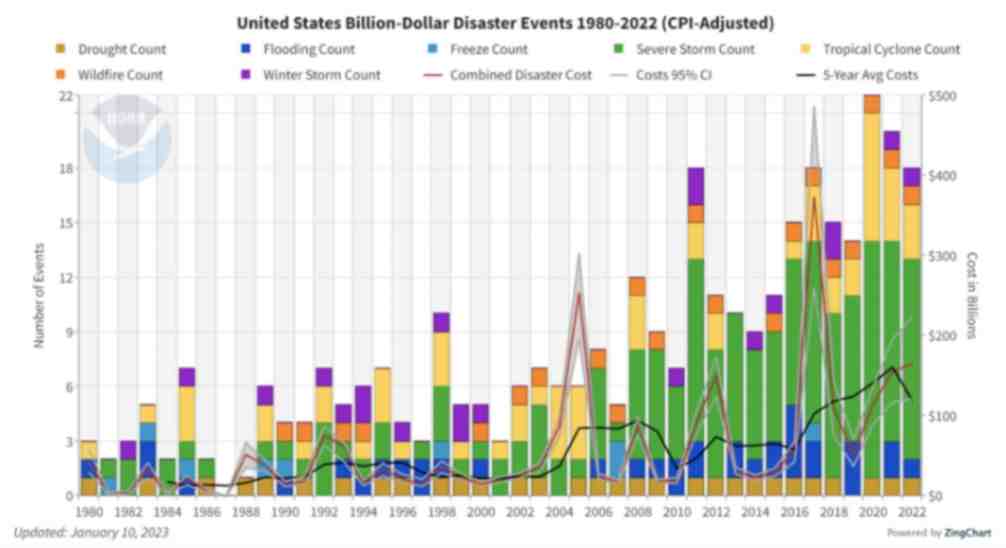
Figure 1. The history of billion-dollar disasters in the United States each year from 1980 to 2022 (source: NOAA)
In terms of loss prevention, a Catastrophe (CAT) Modeling Study is the first step to understanding the exposure and potential financial loss from natural hazards or extreme weather events. CAT studies form the foundation for wider risk management strategies, and have significant implications for insurance costs and coverage.
Despite their importance, developers often view these studies as little more than a formality required for project financing. As a result, they are often conducted late in the development cycle, typically after a site has been selected. However, a strong case can be made for engaging early with an independent third party to perform a more rigorous site-specific technical assessment. Doing so can provide several advantages over traditional assessments conducted by insurance brokerage affiliates, who may not possess the specialty expertise or technical understanding needed to properly apply models or interpret the results they generate. One notable advantage of early-stage catastrophe studies is to help ensure that the range of insurance costs, which can vary from year to year with market forces, are adequately incorporated into the project financial projections.
The evolving threat of natural disasters
Over the past decade, the financial impact of natural hazard events globally has been almost three trillion dollars. In the U.S. alone, the 10-year average annual cost of natural disaster events exceeding $1 billion increased more than fourfold between the 1980s ($18.4 billion) and the 2010s ($84.5 billion).

Investors, insurers, and financiers of renewable projects have taken notice of this trend, and are subsequently adapting their behavior and standards accordingly. In the solar market, for example, insurance premiums increased roughly four-fold from 2019 to 2021. The impetus for this increase can largely be traced back to a severe storm in Texas in 2019, which resulted in an $80 million loss on 13,000 solar panels that were damaged by hail.
The event awakened the industry to the hazards severe storms present, particularly when it comes to large-scale solar arrays. Since then, the impact of convective weather on existing and planned installations has been more thoroughly evaluated during the underwriting process. However, far less attention has been given to the potential for other natural disasters; events like floods and earthquakes have not yet resulted in large losses and/or claims on renewable projects (including wind farms). The extraordinary and widespread effect of the recent Canadian wildfires may alter this behavior moving forward.
A thorough assessment, starting with a CAT study, is key to quantifying the probability of their occurrence — and estimating potential losses — so that appropriate measures can be taken to mitigate risk.
All models are not created equal
Industrywide, certain misconceptions persist around the use of CAT models to estimate losses from an extreme weather event or natural disaster.
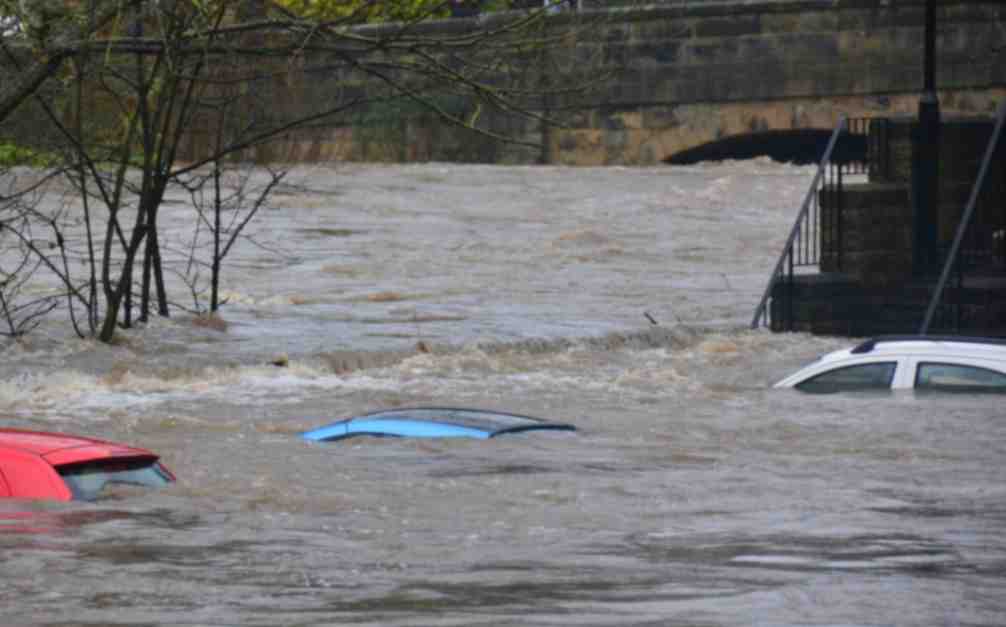
Often, the perception is that risk assessors only need a handful of model inputs to arrive at an accurate figure, with the geographic location being the most important variable. While it’s true that many practitioners running models will pre-specify certain project characteristics regardless of the asset’s design (for example, the use of steel moment frames without trackers for all solar arrays in a given region or state), failure to account for even minor details can lead to loss estimates that are off by multiple orders of magnitude.
The evaluation process has recently become even more complex with the addition of battery energy storage. Relative to standalone solar and wind farms, very little real-world experience and data on the impact of extreme weather events has been accrued on these large-scale storage installations. Such projects require an even greater level of granularity to help ensure that all risks are identified and addressed.
Even when the most advanced modeling software tools are used (which allow for thousands of lines of inputs), there is still a great deal that is subject to interpretation. If the practitioner does not possess the expertise or technical ability needed to understand the model, the margin for error can increase substantially. Ultimately, this can lead to overpaying for insurance. Worse, you may end up with a policy with insufficient coverage. In both cases, the profitability of the asset is impacted.
Supplementing CAT studies
In certain instances, it may be necessary to supplement CAT models with an even more detailed analysis of the individual property, equipment, policies, and procedures. In this way, an unbundled risk assessment can be developed that is tailored to the project. Supplemental information (site-specific wind speed studies and hydrological studies, structural assessment, flood maps, etc.) can be considered to adjust vulnerability models.
This provides an added layer of assurance that goes beyond the pre-defined asset descriptions in the software used by traditional studies or assessments. By leveraging expert elicitations, onsite investigations, and rigorous engineering-based methods, it is possible to discretely evaluate asset-specific components as part of the typical financial loss estimate study: this includes Normal Expected Loss (NEL), also known as Scenario Expected Loss (SEL); Probable Maximum Loss (PML), also known as Scenario Upper Loss (SUL); and Probabilistic Loss (PL).
Understanding the specific vulnerabilities and consequences can afford project stakeholders unique insights into quantifying and prioritizing risks, as well as identifying proper mitigation recommendations.
Every project is unique
The increasing frequency and severity of natural disasters and extreme weather events globally is placing an added burden on the renewable industry, especially when it comes to project risk assessment and mitigation. Insurers have signaled that insurance may no longer be the main basis for transferring risk; traditional risk management, as well as site and technology selection, must be considered by developers, purchasers, and financiers.
As one of the first steps in understanding exposure and the potential capital loss from a given event, CAT studies are becoming an increasingly important piece of the risk management puzzle. Developers should treat them as such by engaging early in the project lifecycle with an independent third-party practitioner with the specialty knowledge, tools, and expertise to properly interpret models and quantify risk.
Hazards and potential losses can vary significantly depending on the project design and the specific location. Every asset should be evaluated rigorously and thoroughly to minimize the margin for error, and maximize profitability over its life.
 Chris LeBoeuf is Global Head of the Extreme Loads and Structural Risk division of ABS Group, based in San Antonio, Texas. He leads a team of more than 60 engineers and scientists in the US, UK, and Singapore, specializing in management of risks to structures and equipment related to extreme loading events, including wind, flood, seismic and blast. Chris has more than 20 years of professional experience as an engineering consultant, and is a recognized expert in the study of blast effects and blast analysis, as well as design of buildings. He holds a Bachelor of Science in Civil Engineering from The University of Texas at San Antonio, and is a registered Professional Engineer in 12 states.
Chris LeBoeuf is Global Head of the Extreme Loads and Structural Risk division of ABS Group, based in San Antonio, Texas. He leads a team of more than 60 engineers and scientists in the US, UK, and Singapore, specializing in management of risks to structures and equipment related to extreme loading events, including wind, flood, seismic and blast. Chris has more than 20 years of professional experience as an engineering consultant, and is a recognized expert in the study of blast effects and blast analysis, as well as design of buildings. He holds a Bachelor of Science in Civil Engineering from The University of Texas at San Antonio, and is a registered Professional Engineer in 12 states.
ABS Group | www.abs-group.com
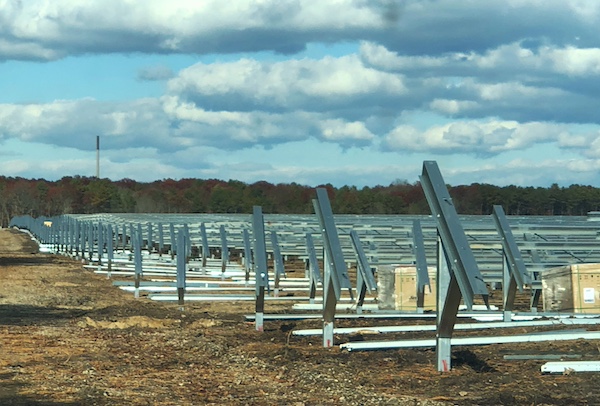
Throughout my life and career as a real estate developer in New York City, I’ve had many successes. In what is clearly one of my most unusual development projects in a long career filled with them, I initiated the building of a solar farm to help t....
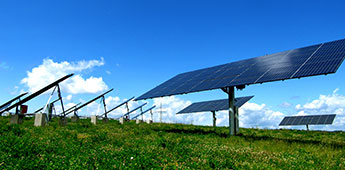
I’m just going to say it, BIPV is dumb. Hear me out…. Solar is the most affordable form of energy that has ever existed on the planet, but only because the industry has been working towards it for the past 15 years. Governments,....
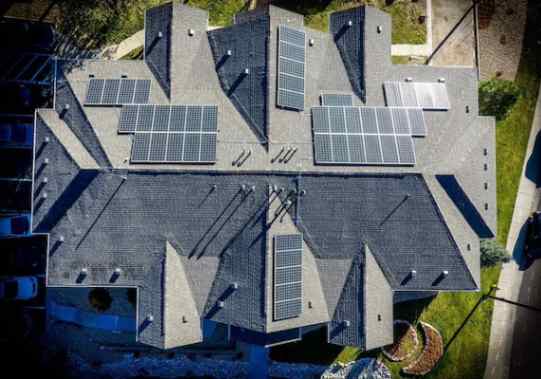
Heat waves encircled much of the earth last year, pushing temperatures to their highest in recorded history. The water around Florida was “hot-tub hot” — topping 101° and bleaching and killing coral in waters around the peninsula. Phoenix had ....
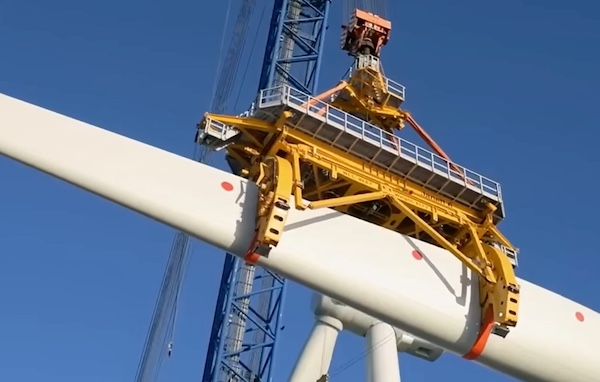
Wind turbines play a pivotal role in the global transition to sustainable energy sources. However, the harsh environmental conditions in which wind turbines operate, such as extreme temperatures, high humidity, and exposure to various contaminants, p....
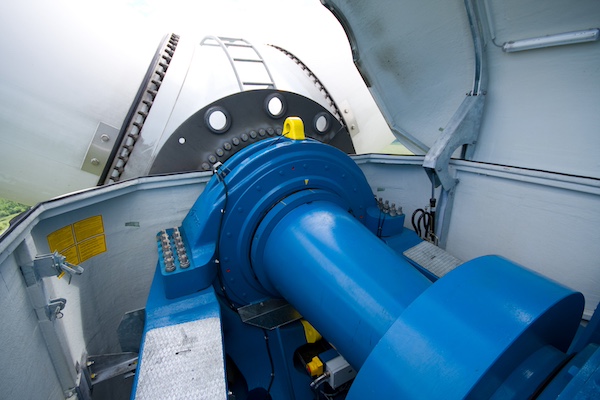
Wind energy remains the leading non-hydro renewable technology, and one of the fastest-growing of all power generation technologies. The key to making wind even more competitive is maximizing energy production and efficiently maintaining the assets. ....
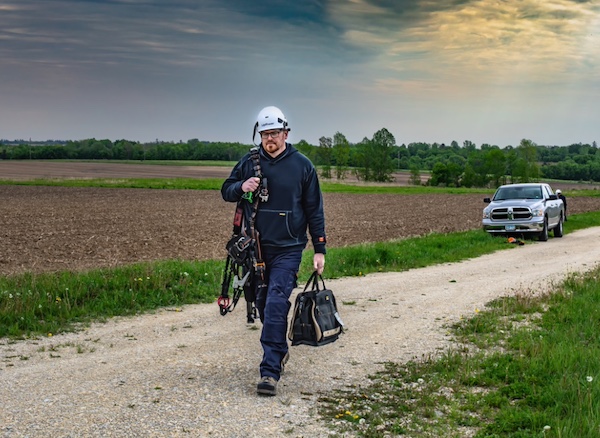
The allure of wind turbines is undeniable. For those fortunate enough to visit these engineering marvels, it’s an experience filled with awe and learning. However, the magnificence of these structures comes with inherent risks, making safety an abs....
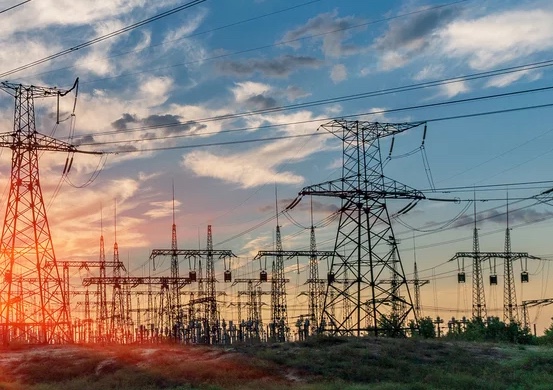
Battery energy storage is a critical technology to reducing our dependence on fossil fuels and build a low carbon future. Renewable energy generation is fundamentally different from traditional fossil fuel energy generation in that energy cannot be p....
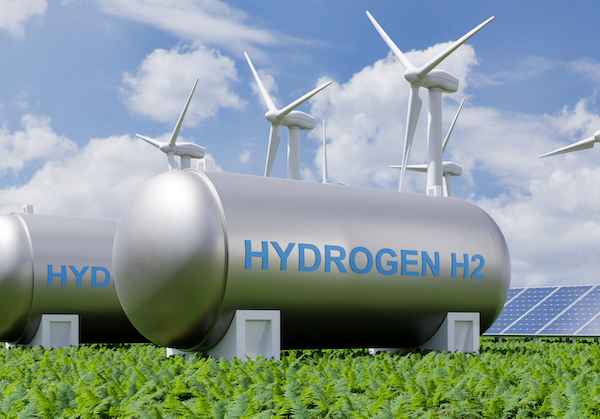
Not enough people know that hydrogen fuel cells are a zero-emission energy technology. Even fewer know water vapor's outsized role in electrochemical processes and reactions. Producing electricity through a clean electrochemical process with water....

In the ever-evolving landscape of sustainable transportation, a ground-breaking shift is here: 2024 ushers in a revolutionary change in Electric Vehicle (EV) tax credits in the United States. Under the Inflation Reduction Act (IRA), a transforma....

Now more than ever, it would be difficult to overstate the importance of the renewable energy industry. Indeed, it seems that few other industries depend as heavily on constant and rapid innovation. This industry, however, is somewhat unique in its e....

University of Toronto’s latest student residence welcomes the future of living with spaces that are warmed by laptops and shower water. In September 2023, one of North America’s largest residential passive homes, Harmony Commons, located....
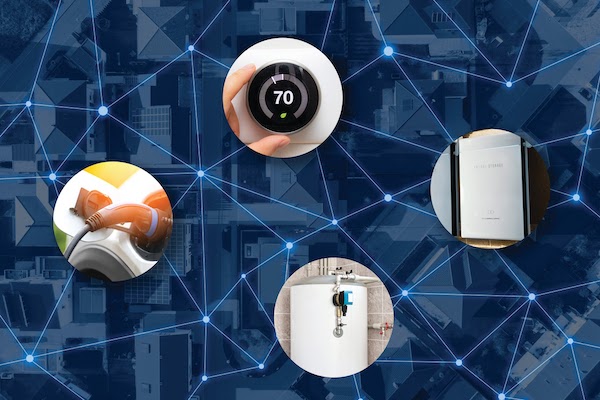
For decades, demand response (DR) has proven a tried-and-true conservation tactic to mitigate energy usage during peak demand hours. Historically, those peak demand hours were relatively predictable, with increases in demand paralleling commuter and ....